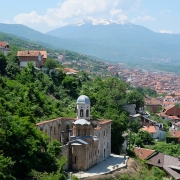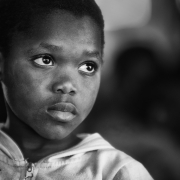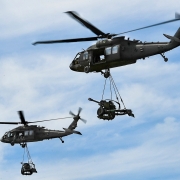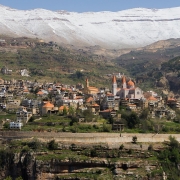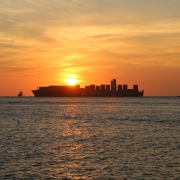What happened in the Kosovo War?
Topic of Study [For H1/H2 History Students]:
Paper 1: Safeguarding International Peace and Security
Section B: Essay Writing
Theme III Chapter 2: Political Effectiveness of the UN in maintaining international peace and security
What happened in Kosovo?
Between 1996 and 1999, an armed conflict broke out between the Serbian and Yugoslav forces due to the desire of the Kosovars to secede from Yugoslavia. The Kosovo Liberation Army (KLA) was supported by the North Atlantic Treaty Organisation (NATO), which led the controversial bombing campaign that affected the UN efforts in conflict resolution. In general, after a series of violent confrontation, Serbian President Slobodan Milošević accepted mediation (Kumanovo Treaty) and allowed United Nations (UN) to provide humanitarian relief to the affected people. In 2008, Kosovo declared independence.
In the following parts, we will examine the developments of the conflict to understand the role of the UN. It is important to identify and analyze the contributing factors affecting the Kosovo War to comprehend the limitations of the UN.
1. [Kosovo] Ethnic tensions in Kosovo
Following the death of Josip Broz Tito, the Socialist Federal Republic of Yugoslavia (SFRY) experienced an outbreak of political and economic instability. In 1992, four out of six republics declared independence, whereas Serbia and Montenegro remained as part of the Federal Republic of Yugoslavia (FRY). The FRY was led by President Slobodan Milošević.
Within Kosovo, the population comprised of an ethnic Albanian majority and Serb minority. In contrast, the FRY was governed by the Serbians. As such, the Serbian government was against the Albanian Kosovars’ idea of secession due to the political problems of separatist movements.
In 1995, the Albanian Kosovars formed the KLA, which used guerilla tactics to attack the Serbian minority in Kosovo, marking the start of the Kosovo War. The conflict escalated during the Račak massacre, in which 45 Albanians were killed by Serbian security troops in Jan 1999.
As a result, this humanitarian crisis prompted NATO to consider the use of force against the FRY, thus causing the conflict to include regional organizations.
2. [United Nations/NATO] International condemnation and intervention
In Mar 1998, the UN Security Council passed Resolution 1160, which imposed an arms embargo on the FRY and disallowed governments from arming the KLA. Although the NATO initiated Operation ‘Determined Falcon’ as a warning to the Serbian government over its aggression, the latter refused to back down.
In view of the continued hostilities between the Serbs and Albanians in Kosovo, the UN Security Council adopted Resolution 1199, which demanded the cessation of Serb aggression against the KLA and the end of KLA’s secession.
3. [NATO] Desperate times; Desperate measures
NATO sought to resolve them conflict on their terms as seen by the ‘Rambouillet Accords’, which the regional organization had drafted. The Accord was a peace agreement between the FRY and the Albanian majority in Kosovo. It pushed for NATO’s administration in Kosovo as well as the deployment of NATO peacekeeping forces.
However, the Serbian government of FRY rejected the Agreement as they perceived the Accord would have enabled NATO to have full access into the whole Yugoslavia. Hence, the breakdown of the peace negotiations led to the start of the disastrous NATO bombing campaign in Mar 1999 that lasted for 78 days.
Unexpectedly, NATO began the aerial bombardments against the FRY without the UN Security Council’s authorization, claiming that the use of force was necessary to resolve the humanitarian problem. Furthermore, the bombing campaign worsened the crisis as thousands of Albanians were forced to evacuate their homes and flee to neighbouring countries.
3. [United Nations] Conflict resolution
As conflict resolution seemed like a forgone conclusion, even with the bombing campaign, NATO declared its intent to conduct a ground invasion. This was motivated by the persistence of the Serbians to escalate the conflict by conducting an ‘ethnic cleansing’ campaign against the Albanians.
Eventually, Milošević backed down, partially due to the Russian-Finnish mediation. In Jun 1999, the UN Security Council adopted Resolution 1244, which led to the deployment of the UN Interim Administration Mission in Kosovo (UNMIK). Additionally, the Kosovo Force (KFOR) supported the UN with its 45,000-strong NATO peacekeeping troops. On 9 Jun 1999, the Kumanovo Treaty was signed between Yugoslavia and Serbia, signalling the end of hostilities and the withdrawal of the FRY security forces.
What can we learn from this case study?
Consider the following questions to comprehend the case study:
– Was NATO more of a help or hindrance to the UN peacekeeping efforts in Kosovo?
– How far do you agree that the Security Council played the most important role in determining the successes of the UN peacekeeping efforts? [to be discussed in class]
The H2 and H1 History Tuition feature online discussion and writing practices to enhance your knowledge application skills. Get useful study notes and clarify your doubts on the subject with the tutor. You can also follow our Telegram Channel to get useful updates.
We have other JC tuition classes, such as JC Math Tuition and JC Chemistry Tuition. For Secondary Tuition, we provide Secondary English Tuition, Secondary Math tuition, Secondary Chemistry Tuition, Social Studies Tuition, Geography, History Tuition and Secondary Economics Tuition. For Primary Tuition, we have Primary English, Math and Science Tuition. Call 9658 5789 to find out more.

